Set 244
1375. 8-1/2" long, patented in 1868:
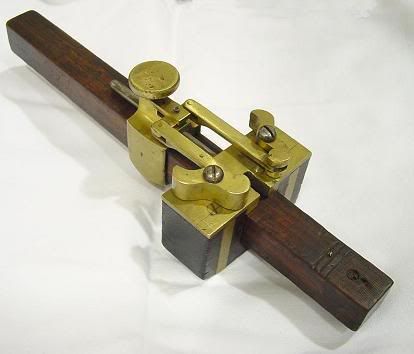
Larger image
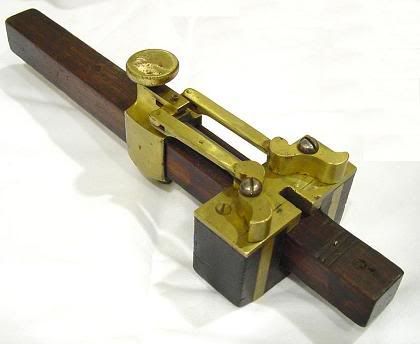
Larger image
A side view of it from the patent:
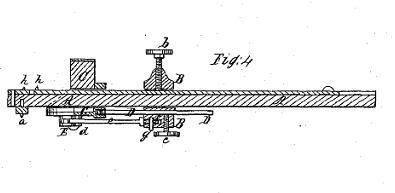
1376. 6-3/4" long, submitted by a visitor:
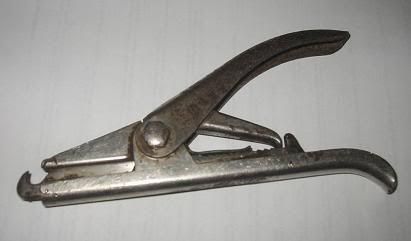
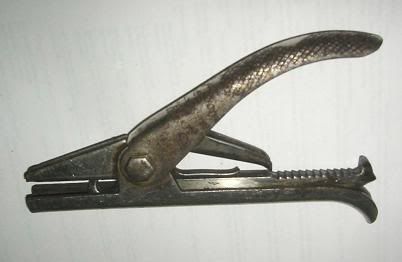
1377a. The general use for these might not be difficult to figure out, but the main idea here is to determine their specific purpose. The base is approximately 18" long:

Larger image
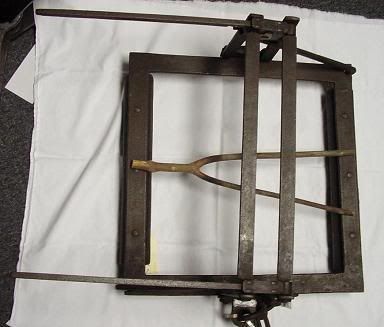
Larger image
1377b. About the same size as the previous device, the back half is a little hard to see but it's almost a mirror image of the front, as seen in the patent drawing in the second image below.
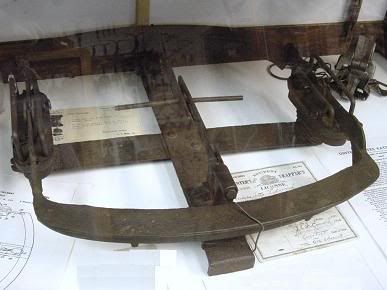
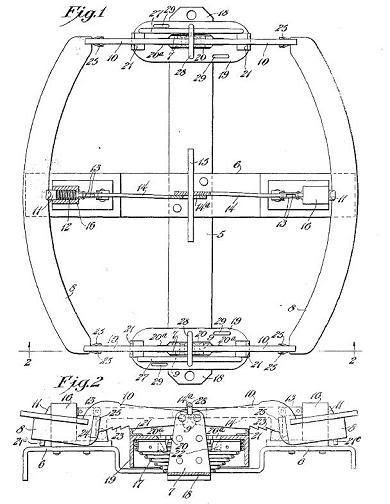
Larger image
1378. 8-1/2" long, take a look at Neatorama for more guesses on this one and a chance to win a T-shirt.
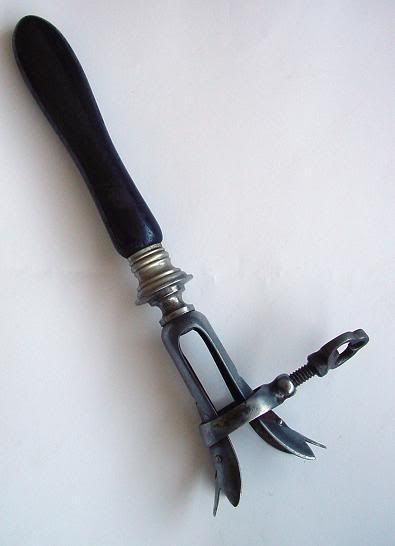
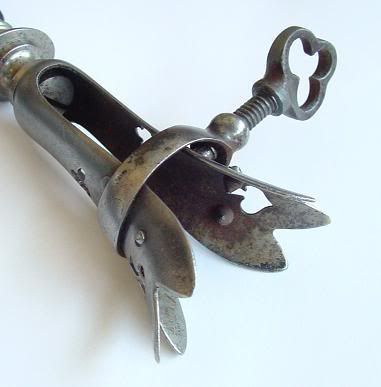
On the inside there are four small spikes on the left and two on the right.
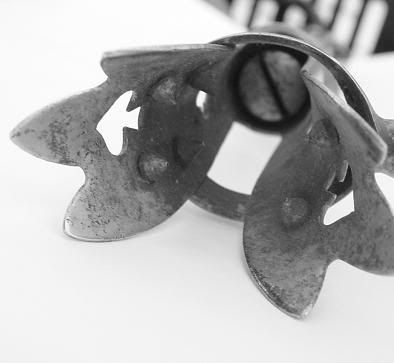
1379. Sent in from Tasmania, Australia, this unidentified artifact is 1.4m (55") long, the largest width is 33cm (13"), and the height is 20cm (7-7/8"). It might be from Malaysia, and was originally owned by someone who traveled extensively.
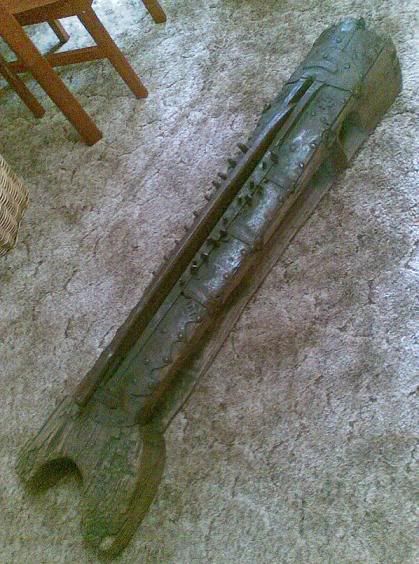
Larger image
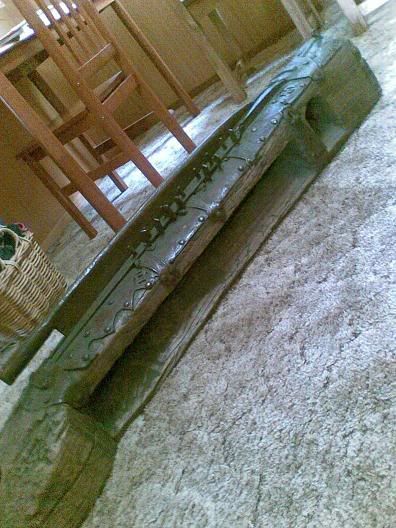
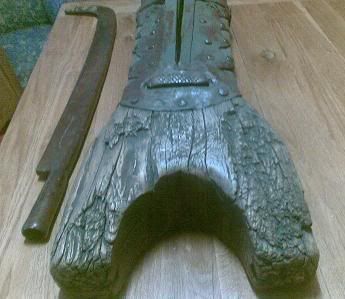
Larger image
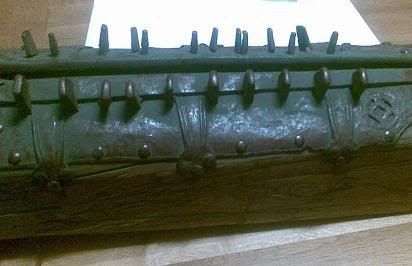
Larger image
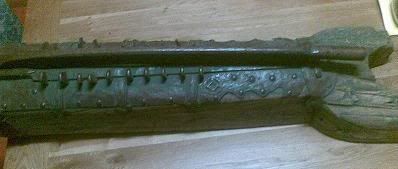
Larger image
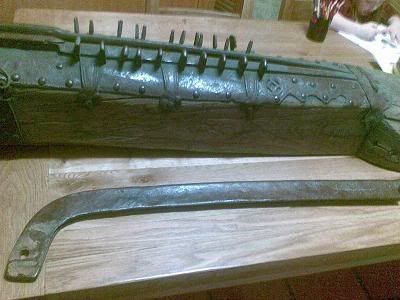
Larger image
1380. 12" long, maybe someone can tell me what this hammer is for, it's marked "Danco Hammer No. 2, Danielson, Conn.":
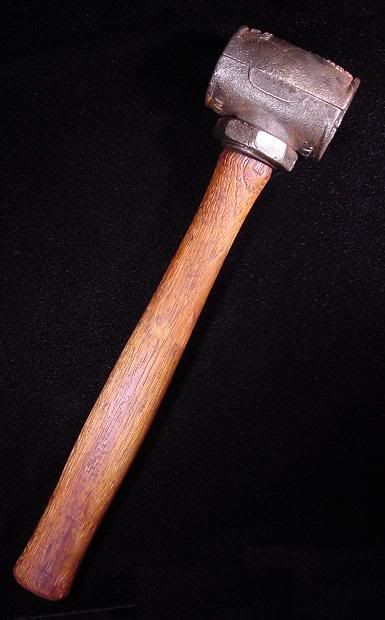
Both ends look the same:
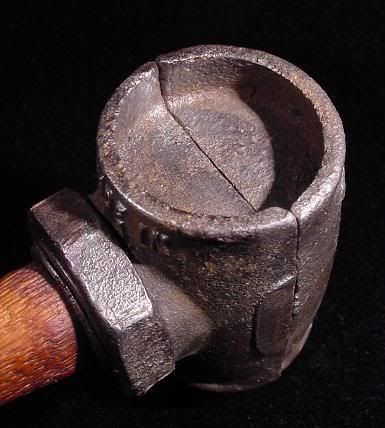
To submit photos, click on the profile link at the upper right to find my email address.
Answers
Last week's set is seen below, click here to view the entire post:

More discussion and comments on these photos can be found at the newsgroup rec.puzzles.

Larger image

Larger image
A side view of it from the patent:

1376. 6-3/4" long, submitted by a visitor:


1377a. The general use for these might not be difficult to figure out, but the main idea here is to determine their specific purpose. The base is approximately 18" long:

Larger image

Larger image
1377b. About the same size as the previous device, the back half is a little hard to see but it's almost a mirror image of the front, as seen in the patent drawing in the second image below.


Larger image
1378. 8-1/2" long, take a look at Neatorama for more guesses on this one and a chance to win a T-shirt.


On the inside there are four small spikes on the left and two on the right.

1379. Sent in from Tasmania, Australia, this unidentified artifact is 1.4m (55") long, the largest width is 33cm (13"), and the height is 20cm (7-7/8"). It might be from Malaysia, and was originally owned by someone who traveled extensively.

Larger image


Larger image

Larger image

Larger image

Larger image
1380. 12" long, maybe someone can tell me what this hammer is for, it's marked "Danco Hammer No. 2, Danielson, Conn.":

Both ends look the same:

To submit photos, click on the profile link at the upper right to find my email address.
Answers
Last week's set is seen below, click here to view the entire post:

More discussion and comments on these photos can be found at the newsgroup rec.puzzles.

9 Comments:
1374: the hollow faces were filled with lead so you could whack harder metal objects without leaving a mark
1376: a fish hook remover?
By Anonymous, at 8/07/2008 8:06 AM
Anonymous, at 8/07/2008 8:06 AM
1375: this is a wood scribe to measure where you want to cut a piece of wood.
By Anonymous, at 8/07/2008 10:22 AM
Anonymous, at 8/07/2008 10:22 AM
1375: As anonymous says (technical term: marking guage), but they don't usually have all that mechanism. It appears to be compensated so you can run it along edges of different curvature and still get a line at the same distance from the edge.
1379: Looks like it might be for softening up some fibrous grass or bark to extract fibers, like a flax brake.
By Anonymous, at 8/07/2008 2:54 PM
Anonymous, at 8/07/2008 2:54 PM
1374 is a hammer that is supposed to have either a urethane or the aforementioned lead face clamped in the head of it.
By Anonymous, at 8/07/2008 4:19 PM
Anonymous, at 8/07/2008 4:19 PM
1374: For what it's worth, those hammers are still made (and used) today. They are called "replaceable face" hammers and there are a lot of different materials used to make the faces including the materials mentioned above but also rawhide, wood, and other plastics.
By Anonymous, at 8/07/2008 9:21 PM
Anonymous, at 8/07/2008 9:21 PM
I agree with anonymous about the marking gauge, but I think the mechanism on top is used to set a specific offset.
By Unknown, at 8/08/2008 7:39 AM
Unknown, at 8/08/2008 7:39 AM
1378: A royal banana holder (Louis XXVI era).
Okay, I made that up...
By Anonymous, at 8/08/2008 7:50 AM
Anonymous, at 8/08/2008 7:50 AM
1375: yes, it's an edge scribe. I'm guessing that the over-complicated mechanism is so that multiple lines can be easily inscribed at a fixed width relative to each other, but at different distances from the edge.
1379: I'm guessing a musical instrument. Possibly of the hammered strings variety.
By Anonymous, at 8/08/2008 10:27 AM
Anonymous, at 8/08/2008 10:27 AM
1379 The metal part with the handle resembles a block knife but it does not appear to be sharp. The pegs appear to be there to hold multiple items in place as the blade is pressed down across them into the groove. If the blade was sharp I would think it was to cut sticks or thatching. If it is not sharp then it could be used to bend or crease sticks or thatching.
By fcampbel, at 8/16/2009 8:20 PM
fcampbel, at 8/16/2009 8:20 PM
Post a Comment
<< Home